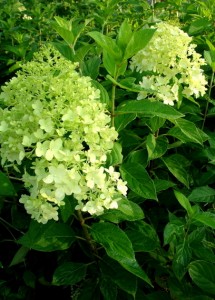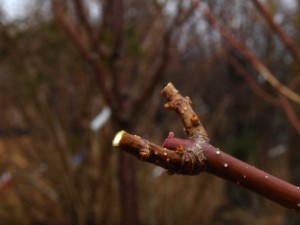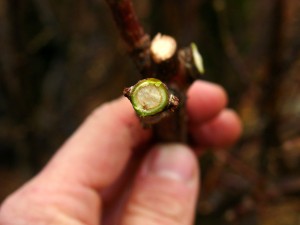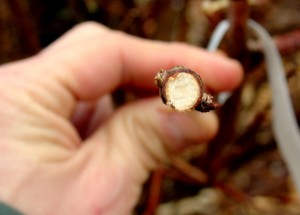
There are many types of Hydrangea grown here on the island. When it comes to pruning, it’s important to remember that different types of Hydrangea have different blooming characteristics. Hydrangea paniculata produces large, conical flowers on new wood in mid to late summer.
Objectives for pruning these shrubs are: Removing dead and damaged wood, removing congested pollards, keeping the plant an appropriate size for its location & stimulating flower production.
Follow these steps to prune an established Hydrangea paniculata multi-stem shrub (not a standard tree) while dormant:
1.Remove any dead or damaged wood. Starting at the tips of the branches where flowers were formed last year, cut back above pairs of buds until a clear ring of green tissue is evident. Entire branches can die back to their point of origin over the winter. Don’t let it upset you, just remove them as cleanly as possible at the base of the plant or where they meet a larger living branch. Remove any thin, brittle twigs as well; they will not be capable of supporting flowers.
2.Remove pollards. Pollards are formed by making pruning cuts at the same place every year. This causes congested areas of weak, spindly growth. If possible, make pruning cuts below the pollard just above the next set of beds, stimulating healthy buds to grow into strong branches.
3.Remove crossing or rubbing branches. Sometimes, we can’t fix every problem and still end up with a balanced shrub. But take the time to remove at least a few branches that grow horizontally toward the center – these branches will begin to rub and damage favorable, upright branches.
4.Prune for overall size and flower production. Cut back all young, strong, branches to within two buds of the main branch. Remember, flowers form at the tips of new wood that grows from the buds just below the cuts made during pruning. Some varieties can put on three or more feet in a single growing season, so observe last years cuts and how much growth occurred above them. Adjust the severity of your pruning accordingly.



